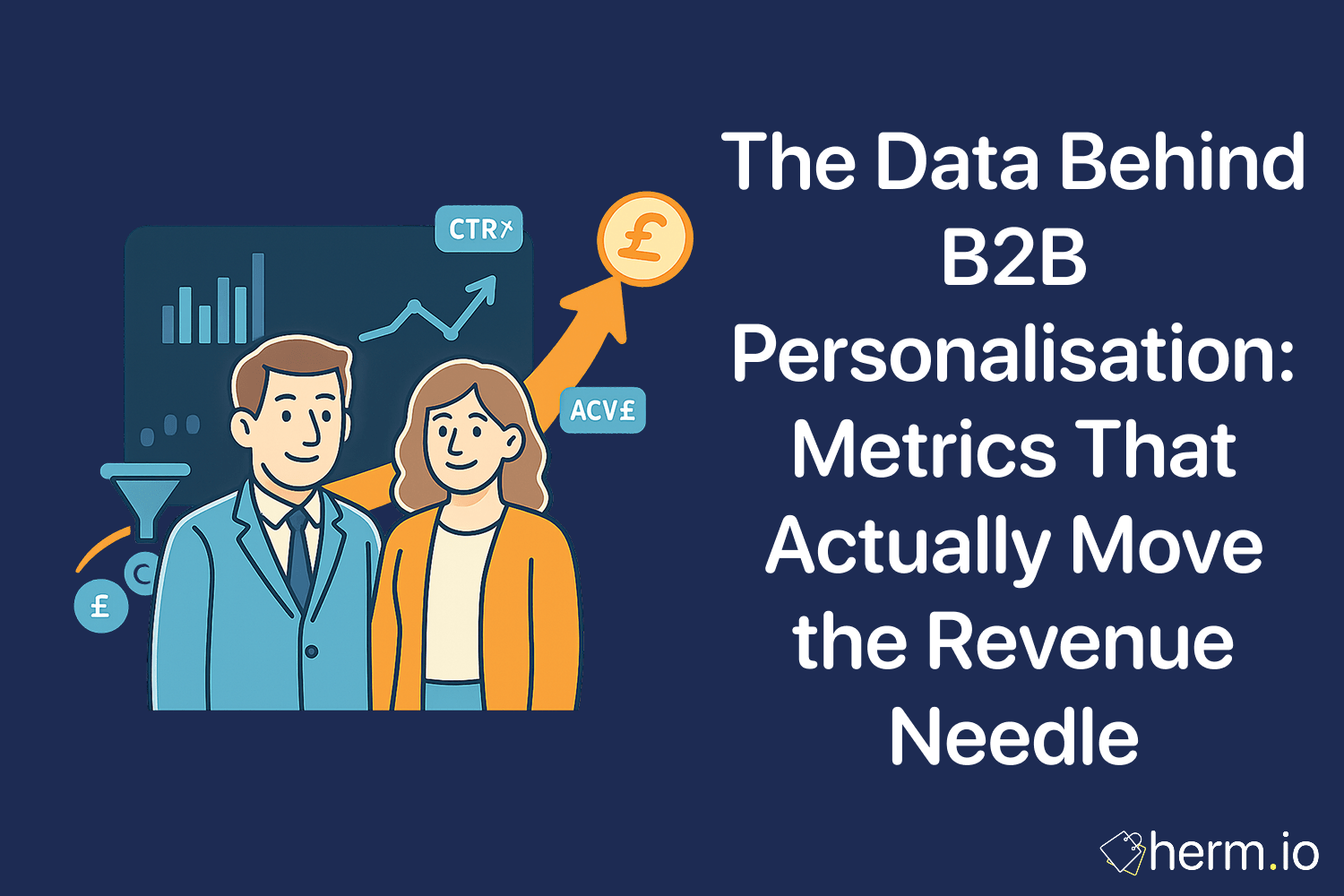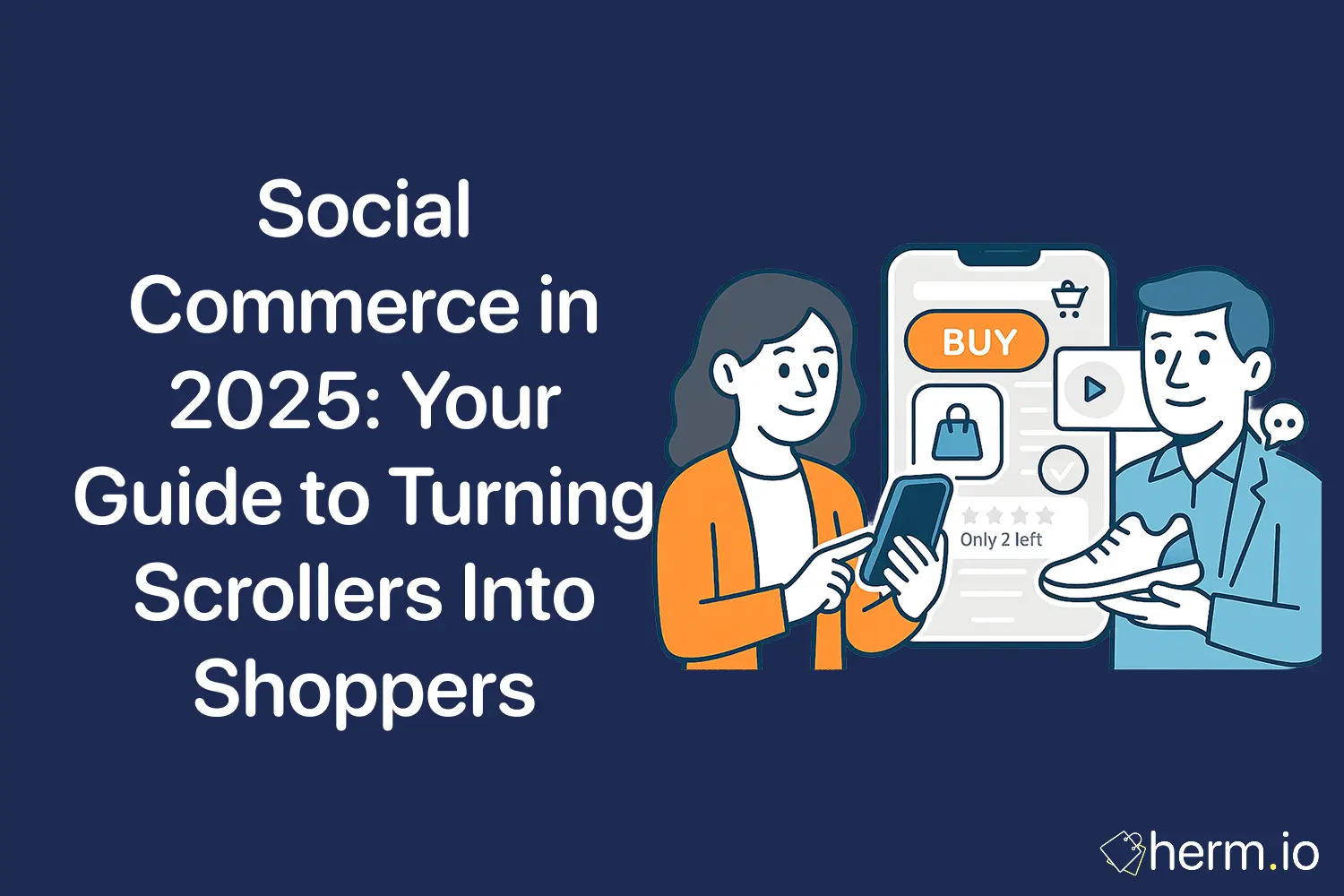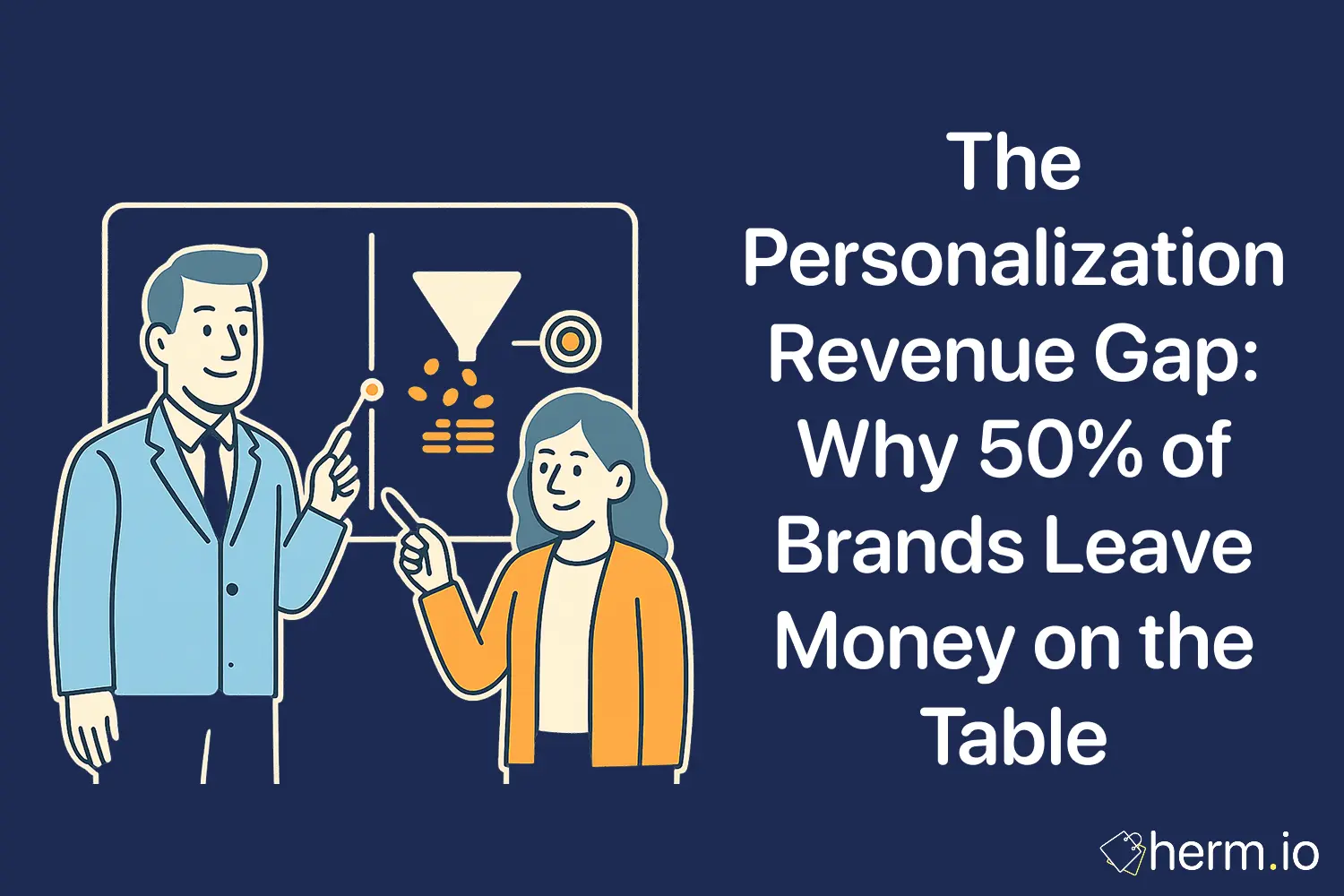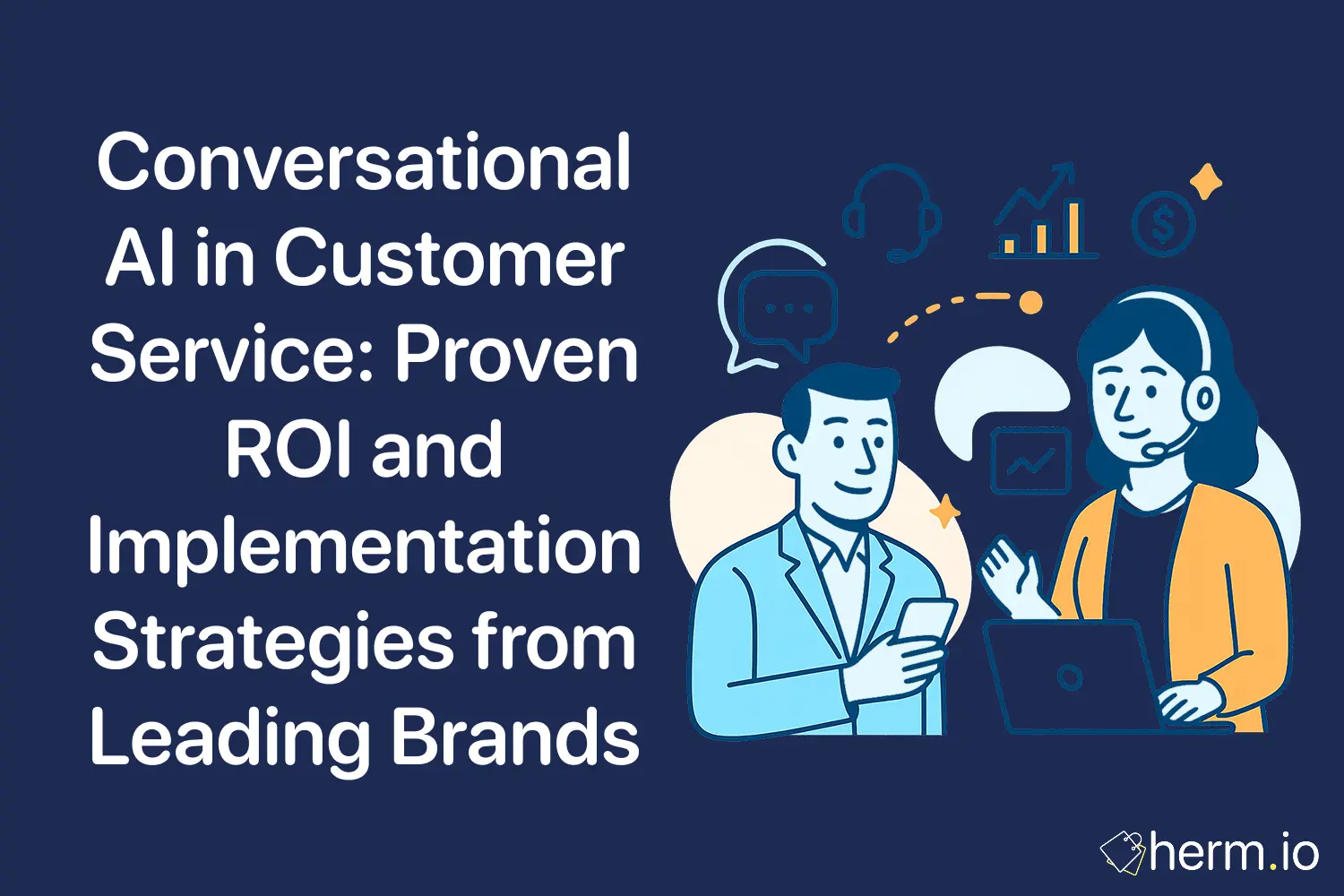
Picture an enterprise software startup tracking 47 different personalisation metrics across their marketing stack. Dashboard after dashboard, each number seemingly more impressive than the last. Yet their pipeline velocity remains stagnant, and sales teams struggle to identify which prospects genuinely warrant immediate attention. Like a beautifully engineered machine with too many moving parts, their measurement system generates noise rather than actionable intelligence.
The numbers tell a clear story about B2B personalisation measurement: most organisations conflate activity metrics with impact metrics. This fundamental misalignment creates a dangerous disconnect between marketing effort and business outcomes. Unlike consumer marketing, where individual purchase decisions happen quickly, B2B personalisation operates within complex organisational buying processes that unfold over months, involve multiple stakeholders, and require entirely different measurement frameworks.
This examination focuses on the specific metrics that illuminate genuine personalisation impact in B2B contexts. Rather than cataloguing every possible measurement, we'll construct a lean analytics framework that connects personalised marketing activities directly to pipeline acceleration and revenue growth.
Why B2B Personalisation Metrics Diverge from Consumer Models
The Complexity of Organisational Buying Behaviour
Consumer personalisation measurement assumes a direct relationship between individual engagement and purchase decisions. B2B buying processes demolish this assumption entirely. A single enterprise software purchase might involve a technical evaluator researching integration requirements, a procurement manager comparing vendor financials, and a business sponsor building internal consensus around strategic priorities.
Each stakeholder engages with personalised content at different moments, through different channels, with vastly different information needs. Traditional individual-level metrics completely miss this orchestrated complexity. When HubSpot analysed their enterprise sales process in 2019, they discovered that successful deals involved an average of 6.8 stakeholders, each requiring personalised content addressing their specific role-based concerns.
This stakeholder multiplicity means personalisation success cannot be measured through individual engagement rates. Instead, measurement must capture how effectively personalised experiences serve the collective buying process. A security officer downloading a technical integration guide, a CFO reviewing ROI calculations, and an end-user watching a product demonstration represent three facets of a single organisational evaluation - not three separate conversion opportunities.
Extended Decision Cycles and Attribution Challenges
B2B decision cycles introduce temporal complexity that consumer models cannot accommodate. Gartner research indicates that B2B buyers spend only 17% of their purchase process directly engaging with vendor content. The remaining 83% involves internal discussions, independent research, and stakeholder alignment activities that occur completely outside vendor visibility.
This creates profound attribution challenges for personalisation measurement. A technical white paper personalised for manufacturing compliance requirements might influence a purchase decision six months later, after being shared internally, discussed in team meetings, and referenced during vendor evaluations. Traditional attribution models, designed for immediate consumer responses, fail catastrophically in these extended cycle scenarios.
Demandbase addressed this challenge by developing what they term "account engagement momentum" - a composite metric that tracks personalised content consumption across time and stakeholders within target accounts. Rather than attributing individual touchpoints, this approach measures whether personalised experiences collectively advance organisational buying processes.
Revenue Impact Versus Engagement Volume
Consumer personalisation often optimises for engagement volume metrics: click rates, time on site, page views per session. These metrics assume that increased engagement correlates with purchase likelihood. B2B purchasing decisions demolish this correlation entirely.
A procurement manager might spend two minutes reviewing a personalised pricing sheet that ultimately influences a seven-figure software purchase. Meanwhile, a curious intern might spend thirty minutes exploring product demonstrations without any decision-making authority. Volume-based engagement metrics not only fail to distinguish between these scenarios - they actively mislead by suggesting the intern represents higher purchase intent.
Adobe's marketing team discovered this disconnect when analysing their enterprise customer acquisition process. High-engagement prospects who consumed extensive personalised content converted to customers at lower rates than prospects who engaged minimally but with highly targeted, role-specific content. This insight led them to completely restructure their personalisation measurement around content relevance rather than engagement volume.
Essential B2B Personalisation Metrics Framework
Account Engagement Velocity
Account engagement velocity measures how quickly personalised experiences accelerate target accounts through defined awareness and consideration stages. Unlike individual lead scoring, this metric aggregates all stakeholder activity within an account and measures momentum changes over specific timeframes.
The calculation requires establishing baseline engagement patterns for your target account segments, then measuring how personalised touchpoints accelerate movement beyond those baselines. Salesforce Marketing Cloud tracks this by comparing account progression rates before and after implementing personalised content experiences.
For measurement purposes, divide your target accounts into cohorts based on industry, company size, and buying stage. Establish baseline progression rates for each cohort using historical data from before personalisation implementation. Then measure how personalised experiences change these progression rates across subsequent periods.
Effective account engagement velocity tracking requires defining clear progression indicators that align with your specific sales process. These might include: first meaningful engagement, stakeholder expansion (additional contacts engaging), technical evaluation initiation, pricing discussion commencement, or reference request submission.
Stakeholder Coverage Depth
This metric measures how effectively personalised experiences reach and engage critical decision-making roles within target accounts. Rather than counting total contacts, stakeholder coverage depth evaluates whether personalisation reaches the specific roles most crucial for purchase decisions.
Begin by mapping the typical buying committee composition for your product category. Technology purchases might require engagement from IT operations, security, finance, and business unit leaders. Each role requires different personalised content addressing their specific concerns and evaluation criteria.
Terminus developed a sophisticated stakeholder coverage model that assigns weights to different roles based on their influence on purchase decisions. Technical evaluators might receive 25% weight, financial approvers 30%, business sponsors 35%, and implementation teams 10%. Stakeholder coverage depth then measures what percentage of critical influence is reached through personalised experiences.
This metric becomes particularly powerful when tracked over time. Successful B2B personalisation should demonstrate expanding stakeholder coverage as deals progress. Early-stage engagement might focus on technical roles, gradually expanding to include financial and business stakeholders as evaluation deepens.
Personalisation-Influenced Pipeline Acceleration
Pipeline acceleration measures how personalised experiences reduce time-to-close for opportunities where prospects engage with customised content. This metric directly connects personalisation activities to sales velocity improvements that impact revenue timing.
Track opportunities from first qualified status through closed-won, comparing progression speeds for deals with and without personalisation engagement. The key insight lies not in absolute acceleration percentages, but in identifying which personalisation types most effectively reduce specific pipeline bottlenecks.
6sense analysed this metric across their customer base and discovered that personalised competitive comparison content reduced evaluation stage duration by 23% on average. However, personalised ROI calculators had minimal impact on evaluation speed but reduced negotiation stage duration by 31%. These insights enabled more strategic personalisation resource allocation.
For accurate measurement, segment opportunities by deal size, industry, and complexity. Large enterprise deals will show different acceleration patterns than mid-market opportunities. Geographic regions may respond differently to personalisation approaches. Industry-specific content might dramatically accelerate some sectors while having minimal impact on others.
Content Resonance Scoring
Content resonance scoring evaluates how effectively personalised content addresses the specific information needs of different stakeholder roles. Unlike engagement metrics that measure activity volume, resonance scoring measures content effectiveness in advancing purchase decisions.
This measurement requires establishing clear behavioural indicators that suggest content successfully addressed stakeholder needs. These might include: content sharing with colleagues, follow-up meeting requests, technical documentation downloads, or specific product feature inquiries.
Marketo developed a resonance scoring model that tracks post-engagement behaviours rather than engagement metrics themselves. Their data showed that personalised content with high resonance scores correlated with 2.3x higher conversion rates, even when initial engagement metrics appeared modest.
Implementation requires defining resonance indicators for each content type and stakeholder role. A personalised technical integration guide shows resonance when prospects request additional technical meetings or download related documentation. Personalised business case studies demonstrate resonance when prospects share content internally or request customer references.
Revenue Attribution Accuracy
Revenue attribution accuracy measures how precisely personalisation activities contribute to closed revenue, accounting for the complex, multi-touch nature of B2B buying processes. This metric addresses the fundamental challenge of connecting personalisation investments to financial outcomes.
Traditional first-touch or last-touch attribution models completely fail in B2B contexts where buying processes involve dozens of touchpoints over extended periods. Effective revenue attribution for personalisation requires time-decay models that weight recent interactions more heavily while accounting for all significant engagements.
HubSpot implemented a sophisticated attribution model that assigns personalisation credit based on stakeholder role importance, engagement timing, and content type significance. Early-stage educational content receives different attribution weights than late-stage competitive comparisons or pricing discussions.
The key insight involves measuring attribution accuracy improvement over time. As personalisation programs mature, revenue attribution should become more precise, with clearer connections between specific personalisation activities and closed deals. This improvement indicates that personalisation efforts are becoming more strategically targeted and effective.
Advanced Measurement Techniques and Tools
Multi-Touch Attribution Modeling for B2B
Multi-touch attribution in B2B personalisation requires sophisticated modeling that accounts for role-based influence, temporal decay, and cross-channel interaction effects. Unlike consumer attribution models that track individual customer journeys, B2B models must accommodate multiple stakeholders engaging simultaneously across different channels and content types.
The most effective approach involves creating account-level attribution models that weight touchpoints based on stakeholder role influence, engagement quality, and temporal proximity to conversion events. Oracle's marketing team developed a model that assigns dynamic weights to personalisation touchpoints based on buying stage progression and stakeholder seniority levels.
Implementation begins with mapping all possible touchpoints across your marketing and sales process: personalised emails, targeted advertisements, customised web experiences, sales outreach, event interactions, and content downloads. Each touchpoint receives baseline attribution weights that can be adjusted based on performance data.
The mathematical foundation requires establishing influence coefficients for different stakeholder roles. A chief technology officer's engagement with personalised technical content receives higher attribution weight than an intern's engagement with the same content. These coefficients should be derived from historical analysis of closed deals and stakeholder involvement patterns.
Predictive Analytics for Personalisation Optimization
Predictive analytics enables proactive personalisation adjustments based on early engagement signals and historical pattern recognition. Rather than measuring personalisation effectiveness after campaigns conclude, predictive models identify optimization opportunities in real-time.
Machine learning algorithms can analyse historical personalisation performance data to identify patterns that predict successful outcomes. These models consider factors like stakeholder engagement sequences, content consumption patterns, and temporal interaction spacing to forecast which personalisation approaches will most effectively advance specific accounts.
Salesforce implemented predictive personalisation scoring that evaluates account characteristics, current engagement patterns, and historical success data to recommend optimal personalisation strategies for each target account. Their model achieved 67% accuracy in predicting which personalisation approaches would generate sales meetings within 30 days.
The technical implementation requires significant historical data sets covering account characteristics, personalisation tactics employed, engagement patterns, and ultimate outcomes. Machine learning models then identify correlations between these variables to generate predictive recommendations for future personalisation efforts.
Real-Time Personalisation Performance Dashboards
Real-time dashboards enable dynamic personalisation optimization by surfacing performance trends as they develop rather than after campaigns conclude. These systems integrate data from marketing automation platforms, CRM systems, website analytics, and sales enablement tools to provide comprehensive personalisation performance visibility.
Effective dashboard design focuses on leading indicators rather than lagging metrics. Instead of displaying yesterday's email open rates, sophisticated dashboards show emerging engagement patterns that predict next week's pipeline generation. These might include stakeholder coverage expansion rates, content resonance trend lines, or account engagement velocity changes.
Terminus created a real-time dashboard that displays account-level personalisation performance across multiple dimensions simultaneously. Marketing teams can observe how personalised advertising impacts website behaviour, how sales outreach affects content engagement, and how these combined activities influence overall account progression.
The technical architecture requires API integrations connecting all personalisation touchpoint systems. Data flows must update frequently enough to enable same-day optimization decisions. Most importantly, dashboard design must prioritise actionable insights over comprehensive data display.
Industry-Specific Implementation Examples
Technology Sector: Software-as-a-Service Platforms
SaaS companies face unique personalisation measurement challenges due to freemium models, multi-product portfolios, and technical evaluation processes that can extend over quarters. Successful measurement frameworks must account for trial usage patterns, feature adoption sequences, and expansion revenue opportunities.
Slack's personalisation measurement focuses on workspace collaboration patterns during trial periods. Rather than measuring individual user engagement, their analytics track how personalised onboarding experiences influence team adoption rates and collaborative behaviour development. Teams that engage with personalised workflow templates show 40% higher conversion rates from trial to paid subscriptions.
Their measurement framework assigns different values to various trial activities: administrative setup (high conversion correlation), integration configuration (very high correlation), and team invitation patterns (moderate correlation). Personalised experiences that drive high-value trial activities receive higher attribution weights in revenue calculations.
The key insight involves measuring personalisation effectiveness through product usage quality rather than engagement quantity. A team that implements three personalised workflow templates demonstrates higher purchase intent than a team that views ten product demonstration videos without taking implementation action.
Financial Services: Enterprise Banking Solutions
Financial services personalisation measurement must account for regulatory compliance requirements, risk assessment processes, and institutional decision-making hierarchies. Traditional engagement metrics often mislead because regulatory requirements mandate extensive due diligence regardless of purchase intent.
JPMorgan Chase developed a personalisation measurement framework specifically for their corporate banking technology solutions. Their model weights compliance documentation engagement differently than product feature exploration, recognising that regulatory review represents required process steps rather than genuine purchase interest indicators.
Their attribution model incorporates regulatory milestone completion as personalisation success indicators. When prospects progress through personalised compliance assessment tools, this activity receives higher attribution weight than general product content engagement. Risk assessment tool completion shows 3.2x higher correlation with ultimate purchase decisions than product demonstration consumption.
The measurement approach acknowledges that financial services buying processes follow mandated evaluation sequences. Personalisation effectiveness is measured by how efficiently customised content enables prospects to complete required evaluation steps, rather than generating additional engagement volume.
Manufacturing: Industrial Equipment and Systems
Manufacturing personalisation measurement must accommodate long capital equipment replacement cycles, technical specification requirements, and operational impact considerations. Purchase decisions often involve six-month evaluation processes with extensive technical validation requirements.
Caterpillar's personalisation measurement framework tracks how customised content supports technical evaluation processes rather than measuring engagement volume. Their analysis revealed that personalised specification sheets and configuration tools showed stronger correlation with purchase decisions than traditional marketing content engagement.
Their attribution model assigns high weights to technical content interactions: personalised specification downloads, configuration tool usage, and customised ROI calculations. These activities receive 2.5x higher attribution weights than general product catalogue browsing or marketing collateral consumption.
The key measurement insight involves recognising that manufacturing buyers use personalised content primarily for technical validation rather than general education. Measurement frameworks must distinguish between information-gathering activities and technical evaluation activities to accurately assess personalisation effectiveness.
Healthcare: Medical Technology Solutions
Healthcare personalisation measurement operates under unique constraints including regulatory approval requirements, clinical evidence standards, and patient safety considerations. Purchase decisions require extensive clinical validation and often involve regulatory submission processes.
Medtronic's personalisation measurement framework accounts for the clinical evidence evaluation process that dominates medical technology purchasing. Their model assigns different attribution weights to various content types: clinical study data (highest weight), regulatory documentation (high weight), and product specifications (moderate weight).
Their analysis discovered that personalised clinical evidence packages reduced evaluation cycle duration by 28% compared to generic clinical documentation. However, this acceleration primarily occurred during internal clinical review phases rather than initial product consideration stages.
The measurement approach recognises that healthcare personalisation must support evidence-based decision making rather than traditional marketing persuasion. Success metrics focus on how effectively personalised content enables clinical teams to complete required evidence evaluation processes.
Conclusion
The numbers tell a clear story: B2B personalisation measurement requires fundamentally different approaches than consumer marketing analytics. Like constructing a precision instrument rather than a general-purpose tool, effective measurement systems must account for the unique characteristics of organisational buying behaviour, extended decision cycles, and multiple stakeholder involvement.
Successful B2B personalisation measurement focuses on account-level progression rather than individual engagement, stakeholder coverage rather than contact volume, and pipeline acceleration rather than activity metrics. These measurement frameworks connect personalisation investments directly to revenue outcomes through sophisticated attribution models that respect the complexity of business buying processes.
The most successful organisations treat personalisation measurement as an engineering discipline, building systematic frameworks that provide actionable intelligence for continuous optimization. Rather than measuring everything that can be tracked, they measure everything that matters for driving revenue growth through more effective personalised experiences.
As B2B buyers increasingly expect consumer-grade personalised experiences, the organizations that master sophisticated measurement approaches will gain significant competitive advantages through more efficient marketing resource allocation and accelerated revenue generation.
Frequently Asked Questions
How do you distinguish between vanity metrics and actionable personalisation metrics in B2B contexts?
Actionable B2B personalisation metrics directly connect to revenue outcomes and pipeline advancement, while vanity metrics measure activity volume without regard to business impact. The critical distinction lies in measurement timing and stakeholder context. Actionable metrics track whether personalisation advances specific accounts through defined buying stages, considering stakeholder roles and decision-making authority. Vanity metrics count engagement events without evaluating their contribution to purchase decisions. For example, measuring stakeholder coverage expansion within target accounts represents actionable intelligence, whilst tracking aggregate email open rates across all contacts represents vanity measurement that provides no strategic guidance.
What is the minimum data set required to implement sophisticated B2B personalisation measurement?
Effective B2B personalisation measurement requires historical account progression data spanning at least twelve months, stakeholder role identification across target accounts, content engagement tracking across multiple channels, and sales outcome data linked to specific accounts. The minimum viable dataset includes account characteristics (industry, size, technology stack), stakeholder information (roles, seniority, influence), engagement activities (content consumed, channels used, timing), and progression indicators (stage advancement, timeline changes, outcome results). Without this foundational data set, measurement efforts devolve into activity tracking rather than impact assessment. Organizations should prioritise data collection consistency over measurement sophistication during initial implementation phases.
How frequently should B2B personalisation metrics be reviewed and optimised?
B2B personalisation metrics require monthly strategic review with weekly tactical monitoring, reflecting the extended nature of business buying cycles whilst enabling responsive optimization. Monthly reviews should focus on account progression patterns, stakeholder coverage evolution, and attribution model accuracy across completed opportunities. Weekly monitoring should track leading indicators like account engagement velocity changes and content resonance score trends that predict future performance shifts. Quarterly deep analysis should examine metric effectiveness itself, adjusting measurement frameworks based on observed correlations between personalisation activities and business outcomes. The key principle involves balancing measurement stability with adaptive responsiveness to changing market conditions and buyer behaviour patterns.
What are the most common measurement mistakes that undermine B2B personalisation program effectiveness?
The most damaging measurement mistake involves applying consumer-oriented individual engagement metrics to complex organisational buying processes, creating false performance signals that mislead resource allocation decisions. Organizations frequently measure personalisation success through aggregate activity volumes rather than account-specific progression indicators, missing the collaborative nature of B2B decision making. Another critical error involves using short attribution windows that fail to capture the extended influence of personalisation touchpoints across months-long buying cycles. Additionally, many programs measure marketing metrics in isolation from sales outcomes, creating disconnect between personalisation efforts and revenue impact. Successful measurement requires account-centric thinking, extended attribution timeframes, and integrated marketing-sales performance visibility.
How do you measure personalisation ROI when B2B buying cycles extend across multiple quarters?
Long-cycle B2B personalisation ROI measurement requires cohort-based analysis that tracks investments and returns across appropriate timeframes while accounting for pipeline value timing differences. Establish quarterly personalisation investment cohorts and track revenue outcomes over twelve to eighteen-month periods, depending on your typical sales cycle duration. Use time-adjusted ROI calculations that account for revenue timing by applying discount rates to future revenue based on sales cycle length. Additionally, measure intermediate ROI indicators like pipeline velocity improvements and average deal size increases that demonstrate personalisation value before final revenue recognition. The approach requires patience and sophisticated attribution modeling, but provides accurate assessment of personalisation program financial impact across realistic B2B decision timeframes.
References and Further Reading
To learn more about the case studies mentioned in this article, consider researching:
- "HubSpot enterprise sales process stakeholder analysis 2019" - HubSpot's sales research provides detailed analysis of stakeholder involvement patterns in enterprise software purchases and their impact on personalisation strategy requirements.
- "Demandbase account engagement momentum methodology" - Demandbase's marketing research details their approach to measuring personalisation effectiveness across extended B2B buying cycles and multiple stakeholder involvement.
- "Adobe enterprise customer acquisition personalisation analysis" - Adobe's marketing team case study examining the relationship between personalisation engagement volume and actual conversion outcomes in enterprise software sales.
- "Salesforce Marketing Cloud account progression measurement framework" - Salesforce documentation describing their methodology for measuring how personalised experiences accelerate target accounts through defined buying stages.
- "Terminus stakeholder coverage depth model white paper" - Terminus research explaining their weighted approach to measuring personalisation effectiveness across different buying committee roles and influence levels.
- "6sense pipeline acceleration personalisation impact study" - 6sense customer success data showing how different personalisation content types affect various sales pipeline stage durations and overall velocity.
- "Marketo content resonance scoring methodology" - Marketo's marketing automation research detailing their approach to measuring personalisation content effectiveness through post-engagement behavioural indicators.

Camille Durand
I'm a marketing analytics expert and data scientist with a background in civil engineering. I specialize in helping businesses make data-driven decisions through statistical insights and mathematical modeling. I'm known for my minimalist approach and passion for clean, actionable analytics.

.png)








.png)

.png)
.png)
.png)